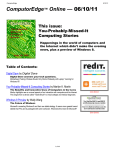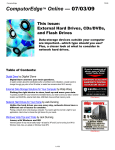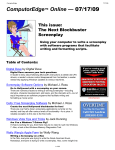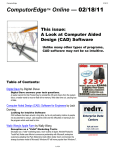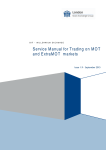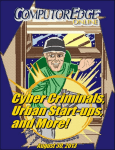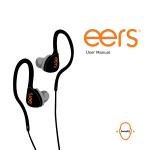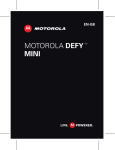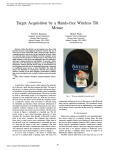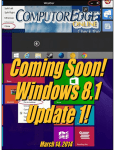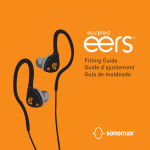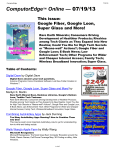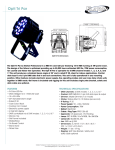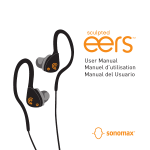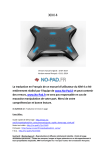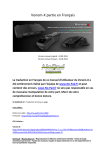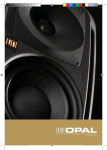Download ARCHIVE 3013
Transcript
ComputorEdge 3/30/12 ComputorEdge™ Online — 03/30/12 This issue: Internet Help for Business Start-Ups, Smell-Vertising, Gender Biased Billboards, and More! Obscure news about computers and the Internet, plus Digital Dave and "Is it worth upgrading to OS X Lion?". Table of Contents: Digital Dave by Digital Dave Digital Dave answers your tech questions. Reading PDF files; Thoughts on Windows 8; Windows 8 Consumer Preview Installation. More Little Known Hi Tech Stories by Marilyn K. Martin Electronics For Alcoholics, Smell-Vertising, Finding Lost Loves, And Bluetooth Toothbrush Smell-Vertising and Gender Billboards; Medical Discovery; Libraries and the Digital Age; Lost Loves; Tackling Alcoholism with Electronics; Enhancements for E-Readers; Employee Tech; A Smartphone World; Vehicle Gadget Guidelines; Successful Start-Ups; Batteries and M.I.T.; Bluetooth Connections. (Click Banner) OS X Lion—is it worth upgrading? by Barry Fass-Holmes Cost-Benefit Analysis of OS X Lion Barry discusses the cost and benefits of upgrading an iMac's operating system (OS) from Leopard to Lion. Windows 8 Tips and Tricks by Jack Dunning The Windows 8 Virtual Keyboard The onscreen keyboard for Windows 8 will be used with Windows 8 tablet computers, it is not as useful for desktop computers. Jack explores the features and capabilities of the touch keyboard, as well as other ways to navigate Windows 8. Wally Wang's Apple Farm by Wally Wang The iPhone as the Leader The iPhone as the Leader; Life Before Text; LifeProof Case for the iPhone; The High Cost of Windows; The iPad Classroom; The Mythical Problems of Apple; Notebook Layout View. Worldwide News & Product Reviews by Charles Carr The latest in tech news and hot product reviews. Where Does the New Apple iPad Sit in the Tablet Bushel?; Google's New Privacy Policy Explained; Custom Fit Your eers; Primer Headset for Xbox. DEPARTMENTS: 1 of 44 (Click Banner) ComputorEdge 3/30/12 Editor's Letters: Tips and Thoughts from Readers by ComputorEdge Staff (Click Banner) Computer and Internet tips, plus comments on the articles and columns. "Self-Publishing on Amazon," "Boot File Not Working," "Constant Banners and Is iCloud Worth It?" "Outlook Spam," "Slow Internet Alice" (Click Banner) (Click Banner) Send mail to [email protected] with questions about editorial content. Send mail to [email protected] with questions or comments about this Web site. Copyright © 1997-2012 The Byte Buyer, Inc. ComputorEdge Magazine, P.O. Box 83086, San Diego, CA 92138. (858) 573-0315 2 of 44 ComputorEdge 3/30/12 Return to Table of Contents Digital Dave “Digital Dave answers your tech questions.” by Digital Dave Reading PDF files; Thoughts on Windows 8; Windows 8 Consumer Preview Installation. Dear Digital Dave, Just recently when I click on a PDF file, it will open in Adobe Photoshop Elements 9. Sometimes the document will show in the Elements program window and sometimes it asks me to enter a password first. I noticed that all of the icons for the PDF documents are the Elements icon. I have to open Adobe reader and then click on the PDF to view it normally. What has caused this and is there anyway to correct it? John San Diego Dear John, Most likely when you installed or reinstalled Photoshop Elements it took over as the default program for PDF files (and probably some other file types as well). When an icon shows the logo of a particular application it means that program is the default application which will open with a double-click on the icon. To change default programs in Windows go to Control Panel => Programs => Default Programs (search for "default" in Windows 7 and Vista; in Windows XP use Set Program Access and Defaults in Add or Remove Programs). To load a file without first opening a non-default program, right-click on the file name and select "Open with...", then select the desired application. You can also choose a new default program for that file type through this same menu. In fact, this last technique is probably an easier way to change the default program for a particular file type than the approach I mentioned above. Digital Dave Dear Digital Dave, I don't know how many of your readers have tried the Windows 8 Consumer Preview, but I do suggest that they back up everything on their computer before they try it. I could not get out of the program. I had to reload Windows 7 and then all of the other "small but important" items back on the computer. As for the "Consumer Preview," I personally thought it was a nightmare. I have used all of the Windows products and have always been able to feel my way through them on the first try. Not this madness. I guess the software engineers never tried it on someone who did not have the education level that they have. How about keeping Windows 7 available for the ones that just can't count to Windows 8? This thought probably belongs in the letters to the editor section, but I feel a small survey on your part would be interesting. John Mlcoch Highlands Ranch, CO Dear John, I think it is likely that Microsoft has learned a little from past mistakes. They have extended support for Windows XP into 2014 based on the demands of users. My guess is that Windows 7 will remain an option for desktop and laptop computers for quite a while. Most likely anyone who buys a Windows 7 computer after the release of Windows 8 will qualify for a free upgrade—if they want it. 3 of 44 ComputorEdge 3/30/12 Once Windows 8 is released, most new off-the-shelf computers will come with it pre-installed. Why? Because, in spite of any misgivings from early lookers, Windows 8 is just plain good enough. In benchmark tests (www.pcworld.com/ article/252383/windows_8_preview_beats_windows_7_in_most_performance_tests.html) by PCWorld, Windows 8 outperformed Windows 7 overall by 14 percent. This may not seem like much, but it tells us that Windows 8 is not merely Windows 7 with a bulky Metro interface slapped on top. To actually improve upon Windows 7 performance requires streamlining—which apparently Windows 8 has. Plus, these tests have been run on beta versions which have not yet been optimized. There are certainly issues with Windows 8. This is one of the reasons that Microsoft has made the Consumer Preview available. They are planning to fix any "real" issues found. Yet, most of the negative reactions to Windows 8 seem to be based upon misunderstandings about how to work with the Metro UI (the main screen). I can see how it can be confusing the first time someone sees it, but a short instruction book would be more than sufficient for most people to become comfortable. This type of poor reception happens anytime there is change to any software product. The success or failure of Windows 8 will depend upon how well Microsoft addresses the concerns of users and the developers. Digital Dave Dear Digital Dave, My neighbor, Lee, a true novice, decided he wanted to "try" out the new Windows 8 Beta. He downloaded it before researching all the possible ramifications of all the things that could/would happen. He first told me he did it and now his burner won't play a DVD. I showed him how to find the tray manufacturer and contact them to see if that tray driver would work with Windows 8. This got me to thinking. I read ComputorEdge (on Windows 8) and then Googled it. After 3-4 hours of reading I found I had just one question: If I right-click my Windows 7 Desktop, I can find Personalize. There, I can choose from over 200 photo folders for the Desktop Background Slide Show, set at five minutes. There are no icons on my Desktop except Recycle Bin. That Slide Show is necessary to me and my life style. Is it in Windows 8? If not, I'll wait on Windows 8 until someone writes a Slide Show program for Windows 8. Chuck Homes San Diego, CA Dear Chuck, While I applaud Microsoft for its early release of its Windows 8 Consumer Preview, inexperienced users need to be cautious when deciding where and how to install it. It must be noted that Windows 8 is first an operating system and if installed directly to your current computer, it will overwrite your current version of Windows. If you want to go back, you will need to reinstall the old version of Windows (as shown by the letter this week from John from Highlands Ranch). This is an unsettling proposition and I don't recommend it unless you have an old working computer sitting in the corner. A slightly better approach is creating a Windows 8 partition (lifehacker.com/5840387/how-to-dual+boot-windows-7and-windows-8-side-by-side) on your hard drive to dual boot the two operating system on your computer. But even this may be a little risky depending upon what it takes to clear up 20GB of space on your hard drive. If you do this, create a complete backup first. The two methods I prefer do not affect your current operating system. The first is to install the Windows 8 Preview into a Virtual Machine as described a couple of weeks ago in Jack's "Windows Tips and Tricks" column. Then the installation will run in a protected window without affecting the primary operating system. The second method is to install Windows 8 on a USB flash drive (www.amazon.com/mn/ search/?_encoding=UTF8&x=14&tag=comput0b920&linkCode=ur2&y=16&camp=1789&creative=390957&field-keywords=flash%20drives&url=search-alias %3Delectronics#/ref=sr_st?keywords=flash drives), then boot your computer from the flash drive (www.redmondpie. com/install-windows-8-consumer-preview-using-a-bootable-usb-flash-drive/) plugged into the USB port on your computer (requires the adjustment of the boot settings in the BIOS). Remember that the Windows 8 Consumer Preview is only a test version and many of the final capabilities are not yet available— particularly drivers that may affect the operation of some of your devices. This version is offered merely to give you an early look at Windows 8. It may change substantially before the official release of the full version. As for your question about the Desktop Slide Show, Windows 8 does indeed have the same capability as Windows 7. It is activated with 4 of 44 ComputorEdge 3/30/12 the same right-click on the Desktop, then selecting Personalize. Interestingly, the Desktop tile in the Metro Start screen will display a thumbnail of the same background currently on the Desktop, although the tile image does not appear to update unless you access the Desktop. Digital Dave 5 of 44 ComputorEdge 3/30/12 Return to Table of Contents More Little Known Hi Tech Stories “Electronics For Alcoholics, Smell-Vertising, Finding Lost Loves, And Bluetooth Toothbrush” by Marilyn K. Martin Smell-Vertising and Gender Billboards; Medical Discovery; Libraries and the Digital Age; Lost Loves; Tackling Alcoholism with Electronics; Enhancements for E-Readers; Employee Tech; A Smartphone World; Vehicle Gadget Guidelines; Successful Start-Ups; Batteries and M.I.T.; Bluetooth Connections. Smell-Vertising and Gender Billboards bus stops. McCain Foods (www.mccainusa.com/), specializing in potatoes, is now trying out "smellvertising (newsfeed.time.com/2012/02/10/follow-your-nose-food-companylaunches-smell-vertising-for-potato-ads/)" in bus-shelter ads in England. The Canadian company is putting up full-size posters of a protruding, fiberglass baked potato. Pushing a button activates a heating element, and suddenly the 3-D spud is warm to the touch, and bus patrons are smelling an oven-baking potato. The downside? Something called the Proustiar Effect, which is an involuntary link between small and long-term memories. Meaning that bus riders may sail past the potatoes in a grocery store, associating them with less-appealing Magazines and some stores have long assaulted our noses with cologne samples. And a Brooklyn grocery store made the news last year for "filling aisles with artificial smells of grapefruit and rosemary focaccia from mounted "scent machines (www.cbsnews. com/stories/2011/07/18/earlyshow/main20080320.shtml)." And a Spanish pastry chef, Jordi Roca, has both created desserts (www.time.com/time/world/article/0,8599,2091586,00.html) that taste like well-known fragrances smell, as well as creating perfume that smells like desserts. Time Magazine also recently published a story about how a new London billboard will only be visible to women (newsfeed. time.com/2012/02/23/face-recognizing-billboard-shows-ad-to-women-only/?xid=newsletter-weekly). The billboard is equipped with a high-def camera that scans passers-by's facial features, and runs a 40-second video only for passing females. Revolutionizing Medical Discovery For hundreds of years, medical discovery moved at a snail's pace: private research discovered something important, then it was submitted to journals for months (or years) of peer review. But the process takes too much time, routed through expensive journals with "a handful of gatekeepers (who) limit the flow of (crucial) information." Now, this "hidebound, expensive and elitist" system is being upended. Advocates for "open science" say science can accomplish more, and faster, through collaboration over the Internet (www. nytimes.com/2012/01/17/science/open-science-challenges-journal-tradition-with-web-collaboration.html?_r=1). Open-access archives, journals and citizen-science sites (like arXiv, Public Library of Science) have sprung up. These sites not only open up important science to everyone, but some sites (like MathOverflow, Polymath Project and ResearchGate) allow professionals to ask questions and collaborate on thorny problems or theorems—to the mutual benefit of all. Imagine being a patient with cancer, and given a time-limit of when you are expected to die. Then imagine doing some digging to find that your particular cancer has been researched—but the results are still locked up in laboratories (seattletimes.nwsource.com/ 6 of 44 ComputorEdge 3/30/12 html/pacificnw/2017392286_pacificpsage12.html). A biologist named Stephen Friend wants to end this current model of "Science plods. Patients wait." So Friend started a nonprofit called Sage Bionetworks (sagebase.org) to revolutionize drug discovery. He advocates an "open-source movement for biology," and aims to shake-up everything from university research secrecy, to the way the National Institutes of Health award grants. Libraries that Embrace the Digital Age As cities and schools close down their traditional libraries in budget cuts, while more and more people have e-readers and surf the Internet, some people are beginning to fret that libraries with actual books are about to go extinct. MomsMiami, however, is promoting a non-traditional library (www.momsmiami. com/?a=profile&u=2&t=blog&blog_id=4215) in North Dade County, Florida, that is successfully blending books and digital experiences. Called YouMedia Miami, the library targets kids 14-19 who can play an electronic keyboard, watch YouTube videos, play on the Xbox or update their Facebook, all in the library's 1,600 square feet of remodeled space. Sound-proofed and repainted, the room also has ten MacBook Pro laptops, and six iMac desktops. There are also board games (including chess), and bean bag chairs to just hang out and talk. It is modeled on the YouMedia which opened in a Chicago public library in 2009, with others being planned around the country. "It is not only a place where they can learn," says librarian Sabine Dantus, "but it's a safe place for them to hang out. We're letting kids take their talent and express themselves, however they want to do it." The Internet and Seeking Lost Loves Have you ever glanced at someone in a public setting, and felt a powerful desire to know them better, but you were either too shy to speak, or when you took your eyes off them briefly, they disappeared? The memory of that chance encounter can be powerful, and even a hundred years ago there were newspaper ads for "love at first sight (contemporaryfamilies.org/marriage-partnershipdivorce/looking-for-love-before-the-internet.html)." One ad in the New York Herald in 1862, described a lady seen by a "male admirer who sat nearby, spellbound. State particulars to avoid mistake. Address 'Discretion', box 215 Herald office." Today we have the Internet, and these "fleeting encounter" ads can pop up anywhere. Craiglist.org has a listing under Personals for "missed connections." You are redirected to your local area, and you then describe who you are looking for (w4m = woman for man). Then you write a post starting with the date of the brief encounter, a simple line description ("just ask me out"), followed by the specific location ("my bar"). The latest incarnation of "seeking lost love (www.miamiherald.com/2012/02/20/2650945/we-kissed-at-carnival-brazilblog.html)" is out of Brazil's Mardi Gras Carnival, where costumed revelers have the goal of kissing as many others as possible during five days of raucous street parties. One star-crossed seeker started a Brazilian blog to help connect the kiss-and-lost-you crowd. Called "Little Leopard, Where Are You?", the blogger has matched up other Carnival seekers, but is yet to find her own lost love, who had been sporting a leopard headband. Tackling Alcoholism with Electronics I've already written about how Hawaii is starting their second year of a volunteer program attaching breathalyzers in the cars of alcoholics, so the vehicles won't start if the person has been drinking. Now comes news from England that London will be the first city to force chronic alcoholics to stop drinking by wearing electronics (seattletimes.nwsource.com/ html/health/2017479074_boozewatch11.html), hopefully cutting down on the one million violent crimes in Britain annually. Trials are planned soon to have London alcoholics wear electronic bracelets to detect alcohol in their perspiration. "Offenders who break their no-drink order can be sent to jail." A similar program in South Dakota in the U.S., found that 77% of alcoholics who chose the option of wearing the monitor, stayed off alcohol. London authorities still need to get permission from Britain's Parliament, and have not disclosed which type of alcoholdetection device they will use. Similar devices in the U.S. such as Alcohol Monitoring Systems (www.alcoholmonitoring.com), 7 of 44 ComputorEdge 3/30/12 "checks every half-hour for ethanol vapor in low levels of perspiration." Enhancements for E-Readers Since sales of e-readers is booming, so is the ancillary market of e-reader accessories (seattletimes.nwsource. com/html/businesstechnology/2017528012_ptereaderaccess18.html). Amazon.com alone features more than 2,000 Kindle-related items (www.amazon.com/Kindle-Accessories/ b/?_encoding=UTF8&node=1268192011&tag=comput0b9-20). Some e-readers come with LCD technology for an "enhanced visual experience." Other e-readers need a clip-on light to read in bed, which range in price from $12-$40. "Screen management" accessories include everything from wipeable screen protectors, to antiglare and stylus touch pens. For e-readers with audio, better earbuds and headphones can be purchased. Employee Tech—Personal Electronics to Web Business Cards There's an interesting controversy currently being waged in companies big and small: Should employees be allowed to bring in their own personal electronic gadgets (www.siliconvalley.com/ci_19923075?source=most_viewed) to work on? Employees who are allowed to work on their own smartphones and tablets while on the job, like the ease of being able to "take their work anywhere" (such as sitting in the stands at Little League games), and not having to juggle both personal and work smartphones. Some employers even embrace the idea as an informal cost-savings plan, although not many have tackled the idea of reimbursing employees for using their own gadgets on the job. Other employers fear that their company's confidential or critical business data could too easily be accessed by hackers from these personal devices away from the job site. 70-80% of young people, especially, prefer to work on their personal devices. Although cyber-security entities found that three out of four adults don't protect their smartphones with security software. A recent poll also found that nearly half of the IT managers polled have forbidden the use of personal devices at work. And slightly more than half of the polled IT managers concede that some of their employees disregard the ban. Less than half the companies in one poll had security procedures in place governing the use of personal devices on the job. And companies still need to address issues such as who owns and can access the companies' e-mail and data on personal devices. Stay tuned ... A site called Lifehacker had a recent and interesting article, about the "five best professional nameplate sites (lifehacker. com/5886188/five-best-professional-nameplate-sites)", from their informal poll. In the era of Web business cards, more people are seeking a one-shot professional Web page to market themselves, whether as a career resume or for social media. The top site suggested was About.me (about.me), which is free, and is currently offering a free pack of (paper) business cards to sign up. It's a Smartphone World! I've already written about predictions that smartphone-hacking will be the hacker explosion this year. Now comes word that a U.S. Court of Appeals has ruled that police don't need a warrant (www.cbsnews.com/8301-205_162-57388907/court-warrantlesscell-phone-searches-legal/?tag=stack) to turn on a suspect's cell phone for its number, and then make an arrest. The case referred to an Indiana case where police had stopped a suspected drug dealer, and upon finding out what the suspect's cell phone number was, arrested him. Defense lawyers argued that this amounted to an illegal search. The three-judge panel disagreed and wrote, "If police are entitled to open a pocket diary to copy the owner's address, they should be entitled to turn on a cell phone to learn its number." So how much do we rely on our smartphones? According to users polled in the UK, "nomophobia (www.latimes.com/ business/technology/la-fi-tn-nomophobia-on-the-rise-20120216,0,2865154.story)" (the fear of losing your cellphone) is on the rise. Symptoms include anxiety if your cellphone isn't nearby, carrying an extra cellphone in case your primary phone breaks, and even taking it to bed with you. Four years ago, the UK survey found that only 53% of users suffered from nomophobia, but that the number has now risen to 66% today. Young people between 18-24 tend to be the most nomophobic (77%), and more women (70%) than men are nomophobic. (Although men are more likely to carry two cellphones, so that could affect the percentage.) DOT Issues Vehicle Gadget Guidelines The U.S. Transportation Department has issued first-ever guidelines to help prevent accidents (content.usatoday.com/ communities/driveon/post/2012/02/dot-distracted-driving-rules-would-crack-down-on-texting/1#. Tz7S5lGwXZg) caused by drivers distractedly using personal or vehicle electronics. With "distracted driving" claiming 3,000 lives in 2010 alone, the new guidelines suggest that while the vehicle is moving, messages and other infotainment tasks be limited to twosecond glances, or one-hand operation. Total voice-command alternatives are being encouraged. The DOT is also proposing that a vehicle's instrument panel stop being designed to look like a video game, to reduce complexity and 8 of 44 ComputorEdge 3/30/12 task length, and to limit unnecessary visual information in the driver's field of view. David Strickland of the National Highway Traffic Safety Administration (NHTSA, overseen by DOT) says, "There are some automakers that have no strategy at all," in terms of redesigning the dash to limit or shorten driver's tasks behind the wheel of a moving car. Successful Start-Ups Business Insider recently ran an interesting article on the best tips (www.businessinsider.com/the-8-best-tips-youll-ever-geton-how-to-launch-and-grow-a-startup-2012-2?utm_source=newser&utm_medium=feed#no-1-hire-talentbefore-getting-funding-1) to launching (and growing) a start-up. Hiring some crucial talent before funding is recommended, "to do your first proof of concept design." Then go hunting for venture capital. After that, let go of your cloud, start cranking out new software, and be ready to rebuild. a month and a half. Another way to find capital (www.cnbc.com/id/46382369/), especially for very small start-ups, is through "crowdfunding," such as Kickstarter (www.kickstarter.com). A perfect example is Alex Andon's 2008 design for jellyfish tanks he assembled in his garage. As orders came in, he started building bigger custom jellyfish tanks, and by 2011 he approached Kickstarter. Andon described his project on the Kickstarter Web site and stated a goal for fundraising. Lenders kick in small amounts, but do not become owners. They are instead "offered products or experience for their financial support." Andon's fundraising goal was $3,000. But he actually raised $163,000 in Innovative Batteries and M.I.T. Massachusetts Institute of Technology "has devised a new technology for a liquid metal battery (www.masshightech. com/stories/2012/02/13/daily35-MIT-advances-liquid-metal-battery-technology.html) that one day could be used as a more consistent supply of renewable energy on the electric grid." A Cambridge-based spinout, Liquid Metal Battery Corp (lmbcorporation.com), was formed in 2010 to "commercialize the technology under a license from MIT's Technology Licensing Office." According to the Boston Globe, MIT has also started a yearly "MIT Accelerate Contest (www.boston.com/ Boston/businessupdates/2012/02/start-developing-new-battery-technology-nets-mitcontest/TDkbKfZVXUu6E0lvjVIeqK/index.html)" to encourage entrepreneurs to turn their ideas into reality. The winner of the inaugural $12,000 in prizes, was SolidEnergy, a start-up focused on battery technology, which beat out 28 other teams. Bluetooth Connections—Satellites to Toothbrushes SPOT Connect (www.findmespot.com/en/) is a new satellite communicator (gpstracklog.com/2011/01/spot-connect-letsyour-smartphone-call-for-help-without-cell-signal.html) that pairs with your smartphone via Bluetooth. This allows a user to send text messages, e-mail or even Facebook or Twitter postings from the middle of nowhere. It costs about $170, and requires a $99.99 annual subscription service. But if it saves your life when you break a leg backpacking, or you are adrift at sea, it could quickly prove itself invaluable. Yes, we live in ultra-connected digital times. In March 2012, Beam Technologies (beamtoothbrush.com) is releasing a "nonmotorized toothbrush that connects to Android devices (www.latimes.com/business/technology/la-fi-tn-beam-bluetooth-toothbrush-20120215,0,1918917.story) via a built-in Bluetooth. The idea is to let users keep track of their brushing habits, since studies have found that people only brush for an average of 46 seconds. But that users are "50% more likely to brush for the optimal full two minutes just by using a simple timer." (Gigom is working on a similar connected-toothbrush for iPhone owners.) Marilyn is a freelance writer and humorist, with a special interest (besides computers and technology) in Science Fiction. A SF Horror story appeared in July 2011 in Deadman's Tome (www.demonictome.com/). And in January 2012 she had a SF Police Procedural appearing in Cosmic Crime magazine, and a SF Dystopian Romance appearing in the Strange Valentines anthology. She also has almost seventy articles on Helium.com (www.helium.com/users/573405/show_articles), and is writing a humorous Young Adult SF series, Chronicles of Mathias (www.amazon.com/Chronicles-Mathias-One-ReptilianRebirth/dp/1598249002). Volumes One and Two have received a "Gold Star for Excellence" from TeensReadToo.com (www.teensreadtoo.com/ReptilianRebirth.html), and are available from most on-line bookstores. ComputorEdge E-Books is now converting Marilyn's computer humor columns into e-books. The second book, Computer Hardware: "Parts Is Parts", is now available at our E-Book Store (www.computoredgebooks. com/Humor-Computer-and-Internet-Anecdotes-and-Jokes_c16.htm) in both EPUB format (www. 9 of 44 ComputorEdge 3/30/12 computoredgebooks.com/Computer-Hardware-Parts-Is-Parts-humor-EPUB-iPad-NOOK-COMPHUMOR00021.htm) for iPad, NOOK, etc., and MOBI format (www.computoredgebooks.com/Computer-Hardware-Parts-Is-Partshumor-MOBI-for-Kindle-COMPHUMOR0002-2.htm) for Amazon Kindle. The first book, Computer Confusion in Paradise: Lo! And in the Beginning There Was Total Befuddlement!, is also available at our E-Book Store (www.computoredgebooks.com/Humor-Computer-and-Internet-Anecdotesand-Jokes_c16.htm) in both EPUB format (www.computoredgebooks.com/Computer-Confusion-in-Paradisehumor-EPUB-iPad-NOOK-COMPHUMOR0001-1.htm) for iPad, NOOK, etc., and MOBI format (www. computoredgebooks.com/Computer-Confusion-in-Paradise-humor-MOBI-for-Kindle-COMPHUMOR0001-2.htm) for Amazon Kindle. 10 of 44 ComputorEdge 3/30/12 Return to Table of Contents OS X Lion--is it worth upgrading? “Cost-Benefit Analysis of OS X Lion” by Barry Fass-Holmes Barry discusses the cost and benefits of upgrading an iMac's operating system (OS) from Leopard to Lion. A reader recently asked Digital Dave whether upgrading an iMac's operating system (OS) from Leopard to Lion was worth it. This excellent question appears simple and straightforward to answer, but it actually is complex and difficult to answer thoroughly in a limited-length comment. One implicit issue in this question is how much an upgrade to Lion costs. Another issue is what advantages or benefits an upgrade to Lion will provide. And a third, perhaps most important, issue for decision-making is the cost-benefit ratio. This article will discuss OS upgrades' costs and benefits for Mac users (some of the concepts here also apply to Windows users) while leaving a cost-benefit analysis to the user. That's because the user probably is the most appropriate person to perform a costbenefit analysis based upon her/his own specific and/or unique goals, needs, etc. The user then can determine whether the benefits outweigh the costs or vice versa. How Much does this Cat Cost? Any upgrade, in my opinion, involves at least two costs—time and money. For me, time is more valuable than money and therefore my answer to this question is weighted more towards the former than the latter. For other users, it might be the opposite. Let's have a look at these two costs involved in upgrading to Lion. The time cost in upgrading an OS from an older major version (e.g., Leopard or Snow Leopard) to the current one (Lion) is greater than the time cost in upgrading a single application (e.g., word processor; hard drive maintenance utility). That's because the OS, unlike a single application, comprises the computer's software innards (e.g., the kernel (en.wikipedia.org/wiki/Kernel_ (computer_science)); hardware drivers; etc.), plus built-in applications such as a file system browser (Finder; Windows Explorer), Web browser (Safari; Internet Explorer), etc. Many more items are modified in an OS upgrade than in a single application upgrade, hence the former costs more time. How much time does upgrading to Lion cost? Probably at least half a day for Snow Leopard users, more for Leopard users. The exact amount of time will vary, depending upon the following factors. One factor is the time it takes to back up prior to performing the upgrade. All users are strongly advised to back up their current installation. This advisable step represents the proverbial ounce of prevention that is worth more than a pound of cure, hedging against the possibility of something going wrong during the upgrade process. However, some users might have backed up recently or will neglect to back up; their upgrade therefore will take less time than if they backed up. Another factor affecting the time cost of upgrading is what OS version the Mac currently has installed. Users upgrading from Snow Leopard (10.6) to Lion (10.7) will spend less time than users upgrading from Leopard (10.5), like the reader who wrote to Digital Dave. That's because Leopard users have to upgrade to Snow Leopard before they can upgrade to Lion (assuming that they comply with Apple's end user license agreement)—Snow Leopard is one of Lion's general requirements (www.apple.com/macosx/specs. html) (see Figure 1). Consequently, Leopard users will perform two upgrades rather than the single upgrade that Snow Leopard users will perform. 11 of 44 ComputorEdge 3/30/12 Figure 1. OS X Lion requires Snow Leopard, therefore Leopard users must upgrade to Snow Leopard before they can upgrade to Lion (assuming they comply with Apple's end user license agreement rather than using a geeky workaround or hack). If you're wondering why Leopard users need to upgrade to Snow Leopard before upgrading to Lion, one reason is that they will need the App Store program (Figure 2) to purchase and download Lion. Mac OS X Lion is available only from Apple's online Mac App Store—it is not available in boxed packages at Apple Stores or resellers' shops—and the App Store program requires (www.macworld. com/article/1156962/mac_app_store_faq.html) Snow Leopard 10.6.6 or higher. A workaround is to purchase Lion on a USB pen drive (store.apple.com/us/product/MD256Z/A) from Apple (Figure 3) and use it to perform a clean installation (details below). This pen drive would save the time it takes to download Lion's 3.8GB installer file (which would be considerable for dial-up users), but the pen drive costs time (and $69) to acquire. Due to these issues, upgrading from Leopard to Lion will cost more time than upgrading from Snow Leopard. Figure 2. The App Store program debuted in Snow Leopard 10.6.6. It provides access to Apple's online store for buying Lion and third-party Macintosh-compatible programs, many of which are priced lower than you would pay in brick-and-mortar shops. Third-party programs included in the App Store have been screened to prevent malware from becoming available. 12 of 44 ComputorEdge 3/30/12 Figure 3. For users who do not have a high-speed Internet connection, Apple sells a USB pen drive equipped with Lion's installer for $69. The time cost of upgrading to Lion additionally will depend upon what type of upgrade (www.macworld.com/ article/1161203/should_you_clean_install_lion.html) installation the user performs. One type is called "upgrade." This involves leaving the current OS installation in place on a Mac's hard drive and converting it to the new OS version; in other words, files that Apple modified in the new version replace their counterparts in the old one while files that Apple did not modify remain untouched. An alternative type of upgrade is called "clean installation." This type of upgrade consists of erasing a Mac's hard drive (after backing it up so that saved files, e-mail, music, etc. can be restored later) and then installing the new OS version brand-new. An upgrade typically costs less time than a clean installation. Which type of upgrade should you perform? Instead of having one "right" and one "wrong" answer, this question depends upon each user's circumstances, goals, needs, etc. My preference, for instance, is to perform clean installations of major new versions of OS X. That's because my goal is to install the latest versions of programs that I actually use, shed ones that I do not (for whatever reason), delete obsolete files, reorganize folders' contents more efficiently, etc. This process consumes a considerable amount of time and can drag out—more than a week in my experience—depending upon what else is on my plate. Clean installations have served me well, though. Your mileage may vary. Another time cost involved in any OS upgrade is how long it takes to learn about new features/functionalities and how to use them. Because of the variability between users' interest level and learning curve for mastering new features and functionalities, this cost will vary correspondingly. And one more thing…if any third-party programs installed in the old OS are incompatible with the new one, it will take time to download and install a newer version that is compatible (assuming the developer has already released one; otherwise it will take more time waiting for a compatible version to be released). Given the aforementioned factors, you now might be more likely to agree that the time cost of upgrading potentially is more valuable that the monetary cost. What is the monetary cost of upgrading to Lion? Users upgrading from Snow Leopard will pay Lion's $29.99 price (itunes.apple.com/ us/app/os-x-lion/id444303913?mt=12) (Figure 4). Users upgrading from from Leopard will pay Snow Leopard's $29.00 price (store.apple.com/us/product/MC573Z/A) (Figure 5) plus $29.99 for Lion. 13 of 44 ComputorEdge 3/30/12 Figure 4. OS X Lion is available only from Apple's online Mac App Store, and its price tag is $29.99. Figure 5. OS X Snow Leopard costs $29.00; thus the monetary cost of upgrading from Leopard to Lion is just under $60. Odds are that some readers will roar that Apple is forcing Leopard users to pay double (either by requiring them to buy Snow Leopard in order to obtain and install Lion rather than making the App Store program available as a free download, or by putting Lion's installer on a USB pen drive and charging extra instead of putting it on a less costly DVD). Windows 7 upgrades (windows.microsoft.com/enUS/windows7/products/compare), for comparison, cost between $120 and $220 depending upon the flavor that you choose. Which upgrade is more affordably priced—Lion for $60 or Windows 7 for $120-220? One more monetary cost involved in upgrading to Lion, as mentioned earlier, is the price of any installed third-party programs that need to be updated to a newer version (if the developer has released one) for compatibility with Lion. By now, the overwhelming majority of Mac programs have been updated for Lion compatibility (including Intuit's Quicken 2007; notable exceptions are Startly's QuicKeys plus Unsanity's WindowShade and other haxies). What are this Cat's Advantages? 14 of 44 ComputorEdge 3/30/12 A second issue implicit in the reader's question to Digital Dave—is upgrading to Lion worth it—relates to Lion's advantages over a previous OS X version. Lion's advantages can be divided into the following categories: • new features • enhancements • bug fixes • security • performance A detailed discussion of Lion's advantages over Snow Leopard is beyond the scope of this article. That's because Lion, according to Apple, has 250 new features (www.apple.com/macosx/whats-new/features.html). Ten of the most publicized ones are the following: • AirDrop—user-friendly interface that wirelessly transfers files between two Macs • Auto Save—programs revised for Lion compatibility instantly save changes that you make in their files • full-screen apps—programs revised for Lion compatibility occupy the entire screen, including the portions otherwise occupied by the menubar and Dock • gestures—enhance functionality for the built-in trackpad and Magic Trackpad • iCloud—replaces MobileMe, synchronizes files between your Apple devices and computers and backs them up remotely • Launchpad—a program that displays all installed apps on your Mac and resembles an iPad's or iPhone's home screen • Mission Control—combines Exposé and Spaces • Resume—all programs that you left open when you last shut down your Mac automatically reopen after restarting or cold booting • scroll bars—behave and look like the ones on iPads and iPhones • Versions—a feature that is like Time Machine for individual files For details, interested readers might want to check out Macworld's informative review (www.macworld.com/ article/161026/2011/07/osx_lion_review.html). Ten of Lion's lesser publicized new features were discussed in my February 24, 2012 article. Two legal advantages of Lion are that its end user license agreement authorizes users to install Lion in up to two virtual machines on a Mac with Lion installed (you cannot legally (images.apple.com/legal/sla/docs/macosx107.pdf) do that with Snow Leopard or older OS X versions), and users are authorized to install (reviews.cnet.com/8301-13727_7-57392814-263/os-x-eulachanges-allow-installation-on-all-of-your-macs/) one licensed copy of Lion on as many Macs as they personally own or control (this is specified in the Mac App Store's terms and conditions). Any Disadvantages? Apple has added some useful new technologies, such as iCloud, in Lion. They also have removed some old technologies in Lion. Examples of old technologies that are gone in Lion include Rosetta and support for Apple's USB modem. Rosetta is an emulator built into OS X for Macs equipped with Intel chips that runs programs written for Macs equipped with PowerPC chips (www.macrumors.com/2011/02/27/mac-os-x-lion-drops-powerpc-emulation-adds-quicktime-pro-featuresmuch-more/) (the old G5 and G4 PowerMacs, for instance). Lion does not include Rosetta. If you install Snow Leopard's Rosetta (reviews.cnet.com/8301-13727_7-20085006-263/q-a-macfixit-answers-lion-edition/?tag=mncol;title) into Lion, it does not function properly. Apple sells an external modem that plugs into a Mac's USB port. Lion does not support this modem. If you plug it into a USB port on a Mac running Lion, an alert displays (reviews.cnet.com/8301-13727_7-20092787-263/apple-usb-modem-not-workingin-lion-but-others-will/) indicating that you cannot use this modem with your computer. Users who still depend upon dial-up for Internet connectivity will need to obtain a supported modem or switch to a more modern technology (DSL, cable modem, etc.) after upgrading to Lion. The Bottom Lion If your Mac is running Snow Leopard, Leopard, or an older version that meets your needs, you could take the view "if it ain't broke, don't fix it" and stick with what you've got rather than investing time and money in upgrading to Lion. In this case, you could wait until purchasing a new Mac; it will come with the latest and greatest OS X preinstalled, thereby saving you some of the time involved in upgrading. Alternatively, if Lion's and/or iCloud's features could make you more productive, efficient and/or satisfied with your user experience, a 15 of 44 ComputorEdge 3/30/12 cost-benefit analysis that includes the time costs of an upgrade might be worth including in your decision-making process. Barry Fass-Holmes has been reviewing products for ComputorEdge since 2003. He previously worked as a software support representative and quality assurance analyst in San Diego. His product reviews are available in ComputorEdge's archives and at his Web site (www.barryfhphd.com/). 16 of 44 ComputorEdge 3/30/12 Return to Table of Contents Windows 8 Tips and Tricks “The Windows 8 Virtual Keyboard” by Jack Dunning The onscreen keyboard for Windows 8 will be used with Windows 8 tablet computers, it is not as useful for desktop computers. Jack explores the features and capabilities of the touch keyboard, as well as other ways to navigate Windows 8. One conclusion that I can safely pass along is that if you are already using Windows 7 on your desktop or laptop computer, then there may be no compelling reason to upgrade. Windows 8 is essentially Windows 7 with the Start Menu morphed into the Metro Start screen. Windows 8 does run a little faster than Windows 7 and there will be Metro apps available in Windows 8 which will not run in the Windows 7 Desktop, but if you're happy with your current setup, then you'll be good for a long time. (If you aren't using or familiar with Windows 7, then you may want to take a look at my e-book Getting Started with Windows 7 (www.amazon.com/gp/ product/B007AL672M/ref=as_li_ss_tl?ie=UTF8&tag=comput0b9-20) currently available only at Amazon. If you don't own a Kindle, then you can download free Kindle reader (www.amazon.com/gp/feature.html/ ref=amb_link_361458882_1? ie=UTF8&docId=1000493771&pf_rd_m=ATVPDKIKX0DER&pf_rd_s=center9&pf_rd_r=0ARMQJ1DFPMF2PBZR9BA&pf_rd_t=1401&pf_rd_p=1354791522&pf_rd_i=1000426311&tag=comput0b920) software for your computer. Even the Windows 8 Consumer Preview includes a Kindle reader app.) The Windows 8 Touch Keyboard If you have Windows 8 installed on a desktop or laptop computer, then you probably won't need to use the touch keyboard. Eventually, if you buy a Windows 8 tablet, you will use the onscreen keyboard. I'm currently reviewing Windows 8 Consumer Preview installed in VirtualBox (www.virtualbox.org) on a Windows 7 computer. Since I don't have a touchscreen, the virtual keyboard does not pop up in the Metro Start screen. (On tablet computers, the touch keyboard will pop up on the screen whenever a text field is entered by touching it. I expect it will act the same on future Windows 8 tablets.) However, the virtual keyboard can be enabled in the Windows Desktop for display and use—although, unless you have a touchscreen, you will need to use a mouse to click the keys. Note: Windows also has a separate virtual keyboard found and activated in the Ease of Access Center. This keyboard is found in all current versions of Windows—including Windows 8, but is not the same as the touch keyboard in Windows 8 which is designed primarily for use with a touchscreen or tablet computer. To activate the Windows 8 touch keyboard in the Windows Desktop right-click on the Taskbar and check Toolbars => Touch Keyboard (see Figure 1). 17 of 44 ComputorEdge 3/30/12 Figure 1. To activate the Windows 8 touch keyboard right-click on Taskbar and check Toolbars => Touch Keyboard. A small icon of a keyboard will appear in on the Taskbar. When that icon is clicked, the keyboard will pop up as shown in Figure 2. There is also a keyboard icon on the virtual keyboard itself. Clicking this icon allows the selection of the different keyboard modes. (Both the Taskbar and options keyboard icons are circled in red in Figure 2.) When a key is clicked (or touched on a tablet) the key will respond —as long as some type of text editing window or word processor is open. Figure 2. The Windows 8 Touch Keyboard can be activated with the keyboard icon in the Taskbar (lower red circle). The three operating modes are the standard keyboard, a split (or thumb) keyboard for use with a tablet computer, and a handwriting recognition tool. The selection of the keyboard option will depend upon personal preference and the environment— desktop/laptop computer or tablet in the field. The split keyboard (also called a thumb keyboard) is designed for use on a tablet computer (see Figure 3). The keyboard is split with half 18 of 44 ComputorEdge 3/30/12 the keys close to the left edge of the touchscreen and the other half close to the right edge of the touchscreen. This facilitates typing with your thumbs while holding a tablet computer with both hands. I know I would need to learn a different style of typing. I'm not sure how useful this would be on a regular computer. Figure 3. The split keyboard is designed for use with a touchscreen tablet computer when using two thumbs. The keyboard will span the width of the screen when you click the small rectangle in the upper right corner. When first activated in the Windows Desktop, the virtual keyboard floats within the screen. If you click the small rectangle in the upper right corner, the keyboard will expand to the full width of the screen putting the split keyboard keys within reach of the thumbs. I'm guessing that the touch keyboard for the Metro screen will always span the width of the screen. The third keyboard option is the handwriting recognition mode (see Figure 4). It is more likely that this will be used on a touch tablet, since it is awkward to write with a mouse. I'm not in a good position to evaluate this capability since I don't have a touchscreen and my handwriting is always difficult to recognize—even for me. 19 of 44 ComputorEdge 3/30/12 Figure 4. The handwriting tool converts handwriting to text. This example was done on a computer with a mouse. One feature of the virtual keyboard which may add amusement to your computing are the emoticon and symbol modes which allow you to add happy faces and various other unusual characters to your projects. While these symbols seem to work well with Windows programs, they don't translate well to other non-Windows systems. For example, with the exception of the standard ASCII emoticons ":-)" found in the last set (circled in red), the characters could not be added to Facebook posts. 20 of 44 ComputorEdge 3/30/12 Figure 5. The happy face key sets the touch keyboard to various emoticon and symbol modes. More Ways to Navigate Windows 8 The virtual keyboard does not work for entering Windows 8 key combinations. It doesn't even have a WIN key ( ). However, as I was tooling around the standard attached hardware keyboard, I found that the Windows logo key plus X ( +X) brought up a power list of commonly used system tools (see Figure 6). This works in both the Metro Start screen and the Windows Desktop. I don't know if this has been added to the Consumer Preview only while Windows 8 is under development, or if it will be part of the final package. If it stays in Windows 8, it could be pretty handy. There are some tricks for changing the content of the menu, but that's beyond the scope of this column. 21 of 44 ComputorEdge 3/30/12 Figure 6. A power tools menu can be activated with the WIN+X combination or with a right-click on the Metro thumbnail. This power tools list can also be activated by hovering the cursor in the lower left corner of the screen until the Metro UI thumbnail appears and right clicking. This is a little awkward with a mouse. The following is a summary of WIN ( ) key combinations: +B Open Windows Desktop from Metro Start screen. Does not clear open windows. +C Open Charms menu from Metro Screen or Windows Desktop. +D Open Windows Desktop then toggle open windows. +E Open Windows File Explorer at Computer. Control Panel button appears on ribbon interface. +F Search files from Metro Start or Windows Desktop in Metro Start screen. +H Open Share. +I Open Settings. +J Same as +B. +K Open Devices. +L Lock (log off). +M Open Windows Desktop clears windows. +P Second screen. +Q Search Apps. +R Run. +T Tab to next open app (Metro and Windows Desktop). +U Open Ease of Access Center. +W Search Settings. +X Open tools power menu. +F1 Help F3 Search Files when pressed in Windows Desktop. ALT+F4 Shut Down Windows window. 22 of 44 ComputorEdge 3/30/12 Jack is the publisher of ComputorEdge Magazine. He's been with the magazine since first issue on May 16, 1983. Back then, it was called The Byte Buyer. His Web site is www.computoredge.com. He can be reached at ceeditor@computoredge. com. Jack is now in the process of updating and compiling his hundreds of articles and columns into e-books. Currently available: Available exclusively from Amazon, Getting Started with Windows 7: An Introduction, Orientation, and How-to for Using Windows 7 (www.amazon.com/gp/product/B007AL672M/?&tag=comput0b9-20)! Now available, the four book Windows 7 Secrets Essential Bundle (includes the primary tools or Windows 7, the Desktop, Start Menu, Windows Explorer and Taskbar (e-books listed individually below): Windows 7 Secrets Essential Bundle (EPUB for iPad, NOOK, etc.) (www.computoredgebooks.com/Windows-7Secrets-Essential-Bundle-EPUB-for-iPad-etc-WinEssentials-1.htm?sourceCode=writer) Windows 7 Secrets Essential Bundle (MOBI for Amazon Kindle) (www.computoredgebooks.com/Windows-7-SecretsEssential-Bundle-MOBI-for-Amazon-Kindle-WinEssentials-2.htm?sourceCode=writer) Or individually: Windows 7 Desktop Secrets (EPUB for iPad, NOOK, etc.) (www.computoredgebooks.com/Windows-7-DesktopSecrets-EPUB-for-iPad-NOOK-etc-Wintips0005-1.htm?sourceCode=writer) Windows 7 Desktop Secrets (MOBI for Amazon Kindle) (www.computoredgebooks.com/Windows-7-Desktop-SecretsMOBI-for-Amazon-Kindle-Wintips0005-2.htm?sourceCode=writer) Windows 7 Start Menu Secrets (EPUB for iPad, NOOK, etc.) (www.computoredgebooks.com/Windows-7-Start-MenuSecrets-EPUB-for-iPad-NOOK-etc-Wintips0004-1.htm?sourceCode=writer) Windows 7 Start Menu Secrets (MOBI for Amazon Kindle) (www.computoredgebooks.com/Windows-7-Start-MenuSecrets-MOBI-for-Amazon-Kindle-Wintips0004-2.htm?sourceCode=writer) Windows 7 Explorer Secrets (EPUB for iPad, NOOK, etc.) (www.computoredgebooks.com/Windows-7-ExplorerSecrets-EPUB-for-iPad-NOOK-etc-Wintips0003-1.htm?sourceCode=writer) Windows 7 Explorer Secrets (MOBI for Amazon Kindle) (www.computoredgebooks.com/Windows-7-Explorer-Secrets -MOBI-for-Amazon-Kindle-Wintips0003-2.htm?sourceCode=writer) Windows 7 Taskbar Secrets (EPUB for iPad, NOOK, etc.) (www.computoredgebooks.com/Windows-7-TaskbarSecrets-EPUB-for-iPad-NOOK-etc-Wintips0002-1.htm?sourceCode=writer) Windows 7 Taskbar Secrets (MOBI for Amazon Kindle) (www.computoredgebooks.com/Windows-7-Taskbar-SecretsMOBI-for-Amazon-Kindle-Wintips0002-2.htm?sourceCode=writer) Sticking with Windows XP—or Not? (EPUB for iPad, NOOK, etc.) (www.computoredgebooks.com/Sticking-withWindows-XP-or-Not-EPUB-for-iPad-NOOK-etc-Wintips0001-1.htm?sourceCode=writer) Sticking with Windows XP—or Not? (MOBI for Amazon Kindle) (www.computoredgebooks.com/Sticking-withWindows-XP-or-Not-MOBI-for-Amazon-Kindle-Wintips0001-2.htm?sourceCode=writer) 23 of 44 ComputorEdge 3/30/12 Return to Table of Contents Wally Wang's Apple Farm “The iPhone as the Leader” by Wally Wang The iPhone as the Leader; Life Before Text; LifeProof Case for the iPhone; The High Cost of Windows; The iPad Classroom; The Mythical Problems of Apple; Notebook Layout View. Although there are Apple and Microsoft Stores, there are no Android Stores, so one enterprising person in China recently created a fake Android Store. What does a fake Android Store sell? How about real iPhones and iPads along with real Android phones as well? Figure 1. A fake Android Store in China that sells real iPhones. Since Android is basically a copy of the iPhone anyway, it only makes sense that a fake Android Store would sell real Apple products. One of the perceived advantages of Android was its openness, but that has also turned into their greatest weakness. First, Android apps are easy to pirate and distribute, so developers lose out on piracy. Second, Android apps are easy to decompile and modify so people can take a legitimate Android app, change the name of the program, and resell it under their own name by doing nothing more than adding their own logo to the program. Third, malicious hackers can easily decompile a legitimate Android app, booby-trap it with a Trojan horse, and resubmit it to any Android app market to sell or give it away to snare unsuspecting victims. Fourth, the different types of devices and versions of Android keeps leading to fragmentation, which Android users constantly deny is occurring even though it is. Fifth, Android smartphones often take weeks, if ever, to provide the latest version of Android (www. zdnet.com/blog/mobile-news/nexus-s-even-google-cant-do-android-updates/7251?tag=mantle_skin;content) 24 of 44 ComputorEdge 3/30/12 to existing smartphone owners as this ZDNet article points out. With so many obstacles, Android developers have a much harder time making money than iOS developers. For the first time, interest in developing apps for Android (www.adweek.com/news/technology/developers-slowly-losing-interest-android139064) has started to decrease. The future of Android looks shaky, but for now, it's the only alternative to iOS. When Windows 8 arrives, that will be the new competitor to iOS, although it will likely wind up killing Windows Phone 7 in the process. If you're interested in developing mobile apps, focus on iOS first and Windows 8 second and maybe Android third, just as long as you don't plan on making much money selling Android apps. You can safely ignore Blackberry OS and Windows Phone 7 since Microsoft will focus on Windows 8 for smartphones eventually. Research in Motion's Blackberry has been losing market share everywhere and now they've lost their number one position (www.bloomberg.com/news/2012-03-22/blackberry-loses-top-spot-to-apple-at-home-corporate-canada.html) in their home country of Canada. With so many people ditching Blackberries, Research in Motion's future looks about as dismal as Windows Phone 7. "For RIM, in its home market, to lose that No. 1 position to iPhone is strategically important," said Paul Taylor, a fund manager at BMO Harris Private Banking in Toronto, who manages about $15 billion in assets, including RIM and Apple shares. "It does identify, even with a home-country bias, how consumers are responding to the greater functionality of the iPhone." As Blackberry sales sink, Windows Phone 7 sales still struggle. That's why Nokia may pay AT&T up to $25 million to make the Nokia Lumia the official AT&T phone (www.electronista.com/articles/12/03/23/att.staff.may.have.option.of.lumia.900.for. free). The idea is that if AT&T sales people get a free Windows Phone 7 phone, they'll be more likely to promote those devices instead of iPhones and Android phones. Of course, those sales people probably won't tell people that with Microsoft pushing Windows 8 to run on all types of devices, it's only a matter of time before Windows 8 will arrive on smartphones and make Windows Phone 7 obsolete. To let you know how popular Windows Phone 7 is with developers, Microsoft has had to pay developers to create Windows Phone 7 apps (www.pcworld.com/article/201050/microsoft_lures_windows_phone_7_app_developers_with_cash.html). Without such cash incentives, developers wouldn't spend time creating apps for a platform that holds such a small share of the market. The big question isn't whether Windows Phone 7 has the apps people want, but whether Windows Phone 7 offers anything that people want in the first place. Microsoft's stores have recently begun a contest to challenge other phone users to perform tasks faster than a Windows Phone 7 phone. According to Electronista, several people claim they beat a Windows Phone 7 phone (www.electronista. com/articles/12/03/26/incidents.show.windows.phone.comparisons.stacked/), but Microsoft initially claimed they won anyway before admitting defeat (www.electronista.com/articles/12/03/26/microsoft.reacts.to.windows.phone. showdown.fiasco/). Others have reported that "Microsoft was alleged to be deliberately throttling Wi-Fi speeds for non-Windows Phone devices attached to its store network. While this might be to prevent people outside the store from exploiting its Internet access, it would have the effect of artificially biasing the tests by letting Windows Phones work at full speed." As a mobile developer, the clear leader is iOS running on iPhones, iPads and iPod touches. As a user, the iPhone is still setting the standards that everyone else is trying to meet and surpass. If you're in the market for a smartphone, look at an iPhone along with Android and other phones so you'll know what each one can do best. To see how far the iPhone has pushed the smartphone industry, just look at all the smartphones before 2007 that had tiny screens, lousy Web browsers, clumsy keyboards, horrible user interfaces, and confusing ways to install apps (if you could find them at all). Anyone still wish the iPhone would go away so we could go back to the old days of non-intuitive smartphones again? Life Before Text As a father of eight-year-old triplets, Troy Omer is afraid that when his children grow up and start driving, they could get into a car accident by driving while texting. That's why Troy created an Android app (an iPhone version is coming soon) called Life Before Text (lifebeforetext.com). "The thought of them driving in today's world, there's so many distractions and meaningless deaths on the road caused by people texting," Troy said. 25 of 44 ComputorEdge 3/30/12 Figure 2. The Life Before Text app can block incoming messages to avoid distracting you while driving. While you're driving over a certain speed, the app blocks calls, texts and e-mails. That way you won't be tempted to glance at your phone and take your eyes off the road. If a teenage driver disables the app, the parents will get an e-mail. If the app is deleted, an e-mail can also be sent to an insurance agent who may be giving the teen driver a discount for having the app installed. Troy spent $20,000 creating the app and sells it for $3.98. If you think staying alive while driving is a little bit more important than texting someone right away just to ask them what they're doing today, then you might want to get the Life Before Text app for your Android phone or give it to someone to keep them from plowing into another car while texting instead of driving. LifeProof Case for the iPhone Since there are no moving parts to the iPhone, it's fairly resistant to dirt and grime unlike other phones that could jam any mechanical features like a sliding keyboard. However, you probably don't want to drop your iPhone in the dirt or spray it with water. While most cases protect the iPhone from falls, few will protect it from a dirty or wet environment like the $79.99 LifeProof case (www.amazon.com/gp/product/B005E52BGC/ref=as_li_qf_sp_asin_tl?ie=UTF8&tag=the15minmovme-20). The LifeProof case completely encloses an iPhone and protects it even underwater up to six feet. Even more amazing is that you can play music underwater, make phone calls, or record videos complete with sound while underwater too. 26 of 44 ComputorEdge 3/30/12 Figure 3. You can immerse your iPhone underwater with the LifeProof case. Besides being waterproof, the LifeProof case also protects against dirt so you can freely use an iPhone in a dusty environment. To protect your iPhone from physical damage, the LifeProof case meets Military Specifications MIL-STD-810F-516.5 (2 meters/6.6ft drop on all surfaces and edges. 26 tests). The LifeProof case consists of just two rubber case halves that fit together. To test your case, the company recommends that you watch a series of videos (www.lifeproof.com/support/video-instructions) that shows how to water proof your case and learn the proper way of handling it. Since the LifeProof case completely encloses your iPhone, you may notice a difference in sound quality when making calls or listening to music. Some people don't mind this difference but others do, so it's something to keep in mind when considering the LifeProof case. Another concern is that with the LifeProof case wrapped around your iPhone, you won't be able to easily plug it into different devices such as stereos unless you buy an optional adapter. Despite these minor issues, the LifeProof case works as advertised and protects your iPhone from any harsh environment. If you regularly enjoy hiking, rock climbing, sailing, or gardening, you'll find the LifeProof case invaluable. If you work in construction, plumbing, landscaping, or any other environment where dirt or water could wreck your iPhone, you may only be able to use your iPhone with a LifeProof case protecting it. Even if you work in a sterile office and do nothing more than carry your iPhone around in your pocket all day, you might want to get a LifeProof case just to protect your iPhone or to take underwater pictures and movies at the beach or swimming pool to amaze your friends with your underwater photography skills. To see how the LifeProof case protects the iPhone in a variety of environments from cold and snow to water and dust, watch these other videos (www.lifeproof.com/pr/videos). For a fun toy or an absolute necessity, depending on where you work or go, the LifeProof case is a one of a kind iPhone accessory. If you need to protect your iPhone from the environment, then you need the LifeProof case. The High Cost of Windows Many people complain that the Macintosh costs too much, but here's a lesson to take from the London Stock Exchange (LSE) that used to rely on Windows servers running the .NET framework on a proprietary platform called TradElect. Back in 2009, the Inquirer (www.theinquirer.net/inquirer/news/1588339/london-stock-exchange-switches-linux) noted that "The TradElect system has been an embarrassment to the LSE with a number of high profile outages. It is also understood to be significantly slower than specialist rivals such as Chi-X. Just keeping it running over its last year of operation cost the LSE £20 million for patches." Even worse, the LSE hired Accenture to upgrade the entire system two years previously at a cost of £40 million. That meant the LSE paid £60 million just to create a platform that wasn't even reliable. After dumping their Windows servers, the LSE has completely replaced their system with the Linux-based MillenniumIT trading platform, which they acquired by purchasing the Sri Lankan company that developed it. The cost for buying this entire company? Just £18 million, which is far less than the cost of constantly patching their old Windows servers and still not getting the results they needed. ITWire (www.itwire.com/opinion-and-analysis/the-linux-distillery/28359-london-stock-exchange-gets-the-facts27 of 44 ComputorEdge 3/30/12 and-dumps-windows-for-linux) even states, "In an industry where milliseconds really can mean the difference between profit and loss it's small wonder the stock exchange has decided to cut its losses, abandoning the $USD 65m Infolect system after only four years. "In a further blow to Microsoft the LSE also predicts moving to Linux will save a further 10m pounds (or $USD 14.7m) through reduced hardware requirements, licensing costs, technical staff and related items." Ironically, Microsoft's marketing initially touted the superiority of Windows over Linux for the London Stock Exchange in a campaign called "Get the Facts." If Microsoft were really interested in telling facts, they wouldn't have tried to distort them in the first place as ZDNet points out (news.cnet.com/8301-13505_3-10145332-16.html), "Have the facts changed? No. But Microsoft finally came to the realization that its customers weren't stupid and could separate fact from fiction." Although Microsoft deleted all references to their earlier bragging that the London Stock Exchange chose Windows over Linux, you can still find fragments of their marketing such as this YouTube video (www.youtube.com/watch?v=BwSM55bsCrM) that briefly explains why the London Stock Exchange initially chose Windows. Of course, there should be a follow up video showing the London Stock Exchange completely replacing those same Windows servers for Linux just four years later. The next time someone complains about the high cost of the Macintosh, they have two choices. First, they can just go with the free Linux operating system and get the openness and reliability that they need for free, which makes any price for Windows look too high. Second, if they don't want to fiddle with technical details, they can pay more for a Macintosh and still get the reliability and ease of use that they need. The absolute last choice should be going with Windows, which costs more than Linux (negating any price advantage Windows might have over the Macintosh) and takes time and money to constantly maintain (which eventually negates Windows' initial price advantage over the Macintosh anyway). For those who must run certain Windows programs, just run Windows as a virtual machine inside the free VirtualBox (www.virtualbox.org) program on top of the far more stable and reliable (and free) Linux operating system. Given the two choices of the Macintosh or Linux, there's no reason to choose Windows, especially now that Windows 8 will force everyone to learn a new user interface that isn't optimized for regular computers. Do you want to pay more to use Windows, wrestle with a new user interface that will hamper your productivity on a desktop or laptop computer, and still not get the reliability you want? Or do you want to switch to Linux or the Macintosh and actually get some useful work done? Just ask the London Stock Exchange how happy they were pouring millions into propping up their faulty Windows servers before dumping the whole thing and switching to Linux. In case you hear any stories about how superior Windows is over Linux, just remember that Microsoft has regularly paid analysts (www.zdnet.com/blog/microsoft/microsoft-tried-to-muck-with-anti-linux-facts/235?tag=content;siu-container) to produce reports favoring Windows according to ZDNet. "According to an e-mail message, dated November 1, 2002, that has been entered as evidence in the Iowa consumer antitrust case against Microsoft, some Microsoft executives favored hiding the fact that Microsoft paid International Data Corp. (IDC) for one of the total-cost-of-ownership studies comparing Windows and Linux that the firm conducted at Microsoft's request. Additionally, according to the e-mail trail, it looks like Microsoft attempted to pressure IDC analysts to tweak the December 2002 study to put Microsoft in a better light." Rob Enderle (www.enderlegroup.com/), a noted technology analyst, writes about technology with a pro-Windows slant, but unless you look at his Wikipedia entry (en.wikipedia.org/wiki/Rob_Enderle), you would never know that he has worked as an advisor to Microsoft, Dell and Toshiba and sits on the advisory council of Hewlett-Packard and Lenova. Anyone think getting paid by Microsoft, Dell and Hewlett-Packard might have some influence on his coverage about Windows? The next time someone claims that Apple only gets positive press because they pay people, ask about Microsoft's long and documented history of paying bloggers and analysts to describe Windows favorably. If Microsoft has to pay people to write anything favorable about Windows while people willingly write favorable stories about the Macintosh and Linux because they can point to actual results, what does that really say about Microsoft's own faith in Windows as a stable, reliable and productive product that people can rely on? The iPad Classroom While schools in the United States wrestle with declining test scores, antiquated textbooks, and boring lecture formats that haven't changed much since the 1800s, the Netherlands is planning to implement an iPad-equipped classroom (www.dutchdailynews. com/plans-for-steve-jobs-ipad-schools-in-the-netherlands) with educational apps to test if the iPad can really improve education. The plan, called Education for a New Era, is designed to help students learn "21st century skills" and push the limits of what can be done in a classroom. The school plans to share their results with others so they can learn from this iPad experiment to see what works and 28 of 44 ComputorEdge 3/30/12 what didn't work. Combine the iPad with iBooks Author to let teachers create their own textbooks and now we can take education out of the hands of the administrators and textbook monopoly and put it in the hands of the actual teachers doing all the work. The real question is when this Dutch experiment is over, will other tablets work just as well in a classroom? Without educational apps and a program like iBooks Author that lets teachers create their own textbooks, both Android and Windows 8 tablets already fall short of the iPad's capabilities. To teach yourself more about different school topics, you can watch short videos by visiting the Khan Academy (www. khanacademy.org). Better yet, just download the free iPad app (click.linksynergy.com/fs-bin/ stat?id=15PJQz44Qcc&offerid=146261&type=3&subid=0&tmpid=1826&RD_PARM1=http%253A%252F %252Fitunes.apple.com%252Fus%252Fapp%252Fkhan-archiver-khanacademy%252Fid504373754%253Fmt %253D8%2526uo%253D4%2526partnerId%253D30) that makes it easy to sort through all the different topics until you find one that meets your needs. With the Khan Academy app on the iPad, you and your kids can turn the iPad into a real educational tool while flying or driving on long trips. Figure 4. The Khan Academy iPad app organizes video tutorials into topics. The Mythical Problems of Apple Every time Apple releases a new product, critics look for a flaw they can exploit to warn people away from that product. Last time it was the antenna problem of the iPhone 4 that tended to lose reception when held a certain way (despite the fact that all mobile phones also lost reception when held in different ways). Now the latest "crisis" is that the new iPad runs hotter than the previous version. Rob Enderle even claims that if you hold the new iPad for too long, you could get burned (www.technewsworld.com/edpick/74694.html). PC World tested these claims (www.pcworld.com/ article/252504/not_so_hot_new_ipad_heat_levels_comparable_to_android_tablets.html) and found that "the new iPad was not dramatically warmer than either the Asus Eee Pad Transformer Prime or the Samsung Galaxy Tab 10.1 LTE, even though its battery has a substantially higher milliampere-per-hour (mAh) rating than theirs do (11666mAh for the new iPad, versus 7000mAh for the Galaxy Tab 10.1 and 6930mAh for the Transformer Prime)." 29 of 44 ComputorEdge 3/30/12 So even though the new iPad runs warmer than the older iPad, it's not a particular problem to cause people to rush out and buy a rival tablet instead. While anti-Apple critics continue making up a fresh new "crisis" every time Apple releases a new product, they continue to ignore the real crisis of similar products. The next time somebody presents you with facts, verify them for yourself and see if you're being told the whole story. * * * If you're using Word 2011 for the Macintosh, there's a unique view buried in the program that isn't available in the Windows version of Word. Just create a new document and chose View => Notebook Layout view. Word will display your document in a notebook image complete with different sections so you can store notes in different parts of the same file. If you bring a laptop to a class or lecture, you can even record audio and store it in your Word document so you can take notes, capture audio, and organize everything in one file. This can be especially handy for taking notes during a class lecture where each section of your document represents a different lecture instead of storing notes in separate files that might get lost or misplaced. Figure 5. Microsoft Word's Notebook Layout view. In the early days, before Wally became an Internationally renowned comedian, computer book writer, and generally cool guy, Wally Wang used to hang around The Byte Buyer dangling participles with Jack Dunning and go to the gym to pump iron with Dan Gookin. Wally is responsible for the following books: My New Mac, Lion Edition (www.amazon.com/gp/product/1593273908/ref=as_li_tf_tl? ie=UTF8&tag=the15minmovme-20&linkCode=as2&camp=217145&creative=399373&creativeASIN=1593273908) My New iPad 2 (www.amazon.com/gp/product/159327386X/ref=as_li_tf_tl? ie=UTF8&tag=the15minmovme-20&linkCode=as2&camp=217145&creative=399373&creativeASIN=159327386X) 30 of 44 ComputorEdge 3/30/12 Steal This Computer Book (www.amazon.com/gp/product/1593271050? ie=UTF8&tag=the15minmovme-20&linkCode=as2&camp=1789&creative=9325&creativeASIN=1593271050) Microsoft Office 2010 For Dummies (www.amazon.com/gp/product/0470489987? ie=UTF8&tag=the15minmovme-20&linkCode=as2&camp=1789&creative=9325&creativeASIN=0470489987) Beginning Programming for Dummies (www.amazon.com/gp/product/0470088702? ie=UTF8&tag=the15minmovme-20&linkCode=as2&camp=1789&creative=9325&creativeASIN=0470088702) Beginning Programming All-in-One Reference for Dummies (www.amazon.com/gp/ product/0470108541?ie=UTF8&tag=the15minmovme-20&linkCode=as2&camp=1789&creative=9325&creativeASIN=0470108541) Breaking Into Acting for Dummies with Larry Garrison (www.amazon.com/gp/ product/0764554468?ie=UTF8&tag=the15minmovme-20&linkCode=as2&camp=1789&creative=9325&creativeASIN=0764554468) Strategic Entrepreneurism with Jon and Gerald Fisher (www.amazon.com/gp/ product/1590791894?ie=UTF8&tag=the15minmovme-20&linkCode=as2&camp=1789&creative=9325&creativeASIN=159079189) How to Live with a Cat (When You Really Don't Want To) (www.amazon.com/gp/product/B006DJYL70/ ref=as_li_tf_tl?ie=UTF8&tag=the15minmovme-20&linkCode=as2&camp=217145&creative=399373&creativeASIN=B006DJYL70) The Secrets of the Wall Street Stock Traders (www.amazon.com/gp/product/B006DGCH4M/ ref=as_li_tf_tl?ie=UTF8&tag=the15minmovme-20&linkCode=as2&camp=217145&creative=399373&creativeASIN=B006DGCH4M) Mac Programming For Absolute Beginners (www.amazon.com/gp/product/1430233362? ie=UTF8&tag=the15minmovme-20&linkCode=as2&camp=1789&creative=9325&creativeASIN=1430233362) 99% Fairy Tales (Children's Stories the 1% Tell About the Rest of Us) (www.amazon.com/gp/product/ B006QSKM3A/ref=as_li_tf_tl?ie=UTF8&tag=the15minmovme-20&linkCode=as2&camp=1789&creative=9325&creativeASIN=B006QSKM3A) The Zen of Effortless Selling with Moe Abdou (www.amazon.com/gp/product/B006PUFPGI/ ref=as_li_tf_tl?ie=UTF8&tag=the15minmovme-20&linkCode=as2&camp=1789&creative=9325&creativeASIN=B006PUFPGI) The 15-Minute Movie Method (www.amazon.com/gp/product/B004TMD9K8/ref=as_li_tf_tl? ie=UTF8&tag=the15minmovme-20&linkCode=as2&camp=1789&creative=9325&creativeASIN=B004TMD9K8) In his spare time, Wally likes blogging about movies and writing screenplays at his site "The 15 Minute Movie Method. (www.15minutemoviemethod.com/)" Wally can be reached at [email protected]. 31 of 44 ComputorEdge 3/30/12 Return to Table of Contents Worldwide News & Product Reviews “The latest in tech news and hot product reviews.” by Charles Carr Where Does the New Apple iPad Sit in the Tablet Bushel?; Google's New Privacy Policy Explained; Custom Fit Your eers; Primer Headset for Xbox. Where Does the New Apple iPad Sit in the Tablet Bushel? Oliver Baltuch, president of the benchmarking company, Futuremark Inc. (www.futuremark.com) writes in this week with performance scores for not only the new iPad but several of its competitors: Apple has been keen to talk about the improved graphical capabilities of the new iPad, with its new display and quad core graphics, but little has been said about the new device's processing power. Is the A5X chip in the new iPad more powerful than the iPad 2's A5 for general computing? The answer appears to be "no" as the new iPad achieves the same score as the iPad 2 in our Peacekeeper browser benchmark, suggesting the CPU performance of the two devices is near identical. Peacekeeper is an HTML5 based browser performance test that can be used to measure and compare the performance of any browser on any Internet capable device, from desktops and notebooks, to tablets and smartphones. What's more, as a device's browser performance is strongly linked to the power of its CPU, Peacekeeper offers a straightforward way to compare the performance of competing devices regardless of differences in operating system. While Web pages may look sharper on the new iPad's improved display, the benchmark results (peacekeeper.futuremark. com/results?key=stats) show that the browsing performance of the new iPad is the same as the iPad 2, suggesting that the computational processing power in both devices is near identical. Peacekeeper is an HTML5 based browser performance test that can be used to measure and compare the performance of any browser 32 of 44 ComputorEdge 3/30/12 on any Internet capable device, from desktops and notebooks, to tablets and smartphones. What's more, as a device's browser performance is strongly linked to the power of its CPU, Peacekeeper offers a straightforward way to compare the performance of competing devices regardless of differences in operating system. Popular tablets ranked by browser performance as measured by Peacekeeper (higher scores are better): • Acer Iconia W500 (Windows 8 consumer preview)—Peacekeeper score: 405 • Apple iPad 3rd gen (iOS 5.1)—Peacekeeper score: 384 • Apple iPad 2 (iOS 5.1)—Peacekeeper score: 383 • Samsung Galaxy Tab 10.1—Peacekeeper score: 356 • ASUS Eee Pad Transformer Prime (Android 4.0.3)—Peacekeeper score: 344 • Apple iPad 1st gen (iOS 5.1)—Peacekeeper score: 234 Peacekeeper (peacekeeper.futuremark.com/) measures browser performance by testing JavaScript functionality. JavaScript is a widely used programming language used in the creation of modern Web sites to provide features such as animation, navigation, forms and other common requirements. By measuring a browser's ability to handle commonly used JavaScript functions Peacekeeper can evaluate its performance. Peacekeeper scores are not influenced by Internet connection speed or latency. Peacekeeper offers a simple and easy way to compare any browser on any device. Peacekeeper is free to use, you don't have to register, and the test takes just 5 minutes to run. In fact, all you need to do is to press one button. Google's New Privacy Policy Explained Adam Bunn, SEO Director of the independent digital marketing agency, Greenlight (www.greenlightdigital.com), has the following for us about Google's new privacy policy, which went into effect earlier this month: Google's much publicized new Privacy Policy and terms, which it says will give users better search results, ads and improve their experience overall, have come under scrutiny from the European Union's (EU) data protection authorities. They have asked for roll out to be delayed in order to fully verify the terms are not in breach of EU data protection laws. From a search engine optimization (SEO) perspective, this likely is the most transparent Google has ever been about how it utilizes consumer click through rate (CTR) data in its algorithm. It gives credence to conclusions the firm had drawn in its own research last year which in Greenlight's view showed Google was already doing exactly this. Google explains the main change, which is for users with Google Accounts, as follows: "Our new Privacy Policy makes clear that, if you're signed in, we may combine information you've provided from one service with information from other services. In short, we'll treat you as a single user across all our products, which will mean a simpler, more intuitive Google experience." In the privacy policy, Google says: "To bring you the most relevant results for each search query, we look at the usage patterns of millions of people using Google every day. It is by analyzing these search patterns via our logs data that our engineers are able to improve the search algorithms that determine the order in which our search results appear. If our engineers can see that people are consistently clicking on the top result for any given query, they know they are doing something right. If people are hitting "next page" or typing in another query, they know they're not delivering the results that people are looking for, and can then take action to try and improve the search algorithms." The new Privacy Policy and terms serve as a reminder, if one were needed, of the importance of the following: • Using micro-formatting to create "rich snippets" that enhance your search engine result page (SERP) listing with additional information such as product listings, comments, post counts, ratings and reviews • Optimizing your title and meta description so that they are compelling and readable, not just keyword rich • Having a clean, concise URL structure so that users can see from the display URL that the page they are going to is the right one. [In the past I have suggested] that Google was testing how well users respond to a particular page ranking in the search results by 33 of 44 ComputorEdge 3/30/12 artificially improving its ranking for intermittent periods, looking at user signals like CTRs, bounce rates, engagement time and so on. Google's transparency over using CTR adds a lot of credibility to this theory. Custom fit your eers Earphones' audio quality depends upon various factors, one of which is tightness of fit (www.macworld.com/ article/160038/2011/05/future_sonics_atrio_m5_2010.html). The tighter that earphones' silicone or foam tips insert into the user's ear canals, the better the audio quality (especially bass). Because ear canals can vary in shape and size, users' challenge is to purchase earphones with tightly fitting tips. Custom molded tips would provide the best fit, but they involve the time and expense of visiting an audiologist. Sonomax Technologies Inc. has devised a more convenient and affordable alternative—SonoFit—that is included with their sculpted eers line of earphones. The PCS-100 (sculptedeers.com/pcs-100-custom-molded-earphones/) is the subject of this review. The PCS-100 earphones (Figure 1) cost $169.99 direct from the company (sculptedeers.com/store/). This price tag includes the SonoFit custom molding system (details in a moment), a 3 ml tube of water-based lubricant, black faceplates with the eers logo and the letter L or R highlighted in red, a black carrying pouch big enough for the earphones and lubricant tube, and 4" x 4" printed user manual plus fitting guide (both in English, French and Spanish). These earphones are entry-level; Sonomax Technologies also sells PCS-150, -200, and -250 models with higher price tags. Figure 1. The PCS-100 earphones have a 50" cable with highly flexible ear loops at one end and a standard 3.5mm gold-plated stereo jack at the other. A plastic splitter (blue oval) without a microphone or remote controls (volume; pause/play) is located about 11.5" below the bottom of the ear loops. A plastic slider (red rectangle) above the splitter helps minimize audio artifacts due to movement. Specifications for this product are as follows: • single driver, dynamic speaker • 3.5 mm (1/8'') gold-plated stereo jack • weight: about 15 g (0.53 oz) • 1.3 m (50") kink-resistant cables • nominal impedance: 32 ohms • sensitivity: 103 dB SPL /100 mVrms @1 kHz • maximum output level: 115 dB SPL • frequency response curve: 18Hz-16kHz Sonomax Technologies' packaging for the PCS-100 is bulky, presumably to ensure sufficient protection. It measures 10.75" x 11.5" x 2.125", tips the scale at 1.3 pounds, and consists of a cardboard outer sleeve and and inner box (Figure 2A). Inside the inner box is a 34 of 44 ComputorEdge 3/30/12 plastic bag containing a tray. The tray includes a clear plastic top with a red stop-sign shaped sticker (details momentarily), a black felt-covered plastic middle piece, and a cardboard bottom to which the middle piece is attached (Figure 2B). Figure 2A. sculpted eers' elaborate packaging consists of an orange cardboard box big enough for two pizzas within a white cardboard sleeve. Figure 2B. Inside the orange box is a plastic bag containing a tray that has a clear plastic top with a stop-sign shaped sticker, and a black-felt covered plastic middle that houses the earphones and other included items. Opening this packaging easily could be a more pleasant experience. After dealing with four pieces of oval tape that seal the orange box's top and bottom, then extracting the box from its white sleeve, and finally cutting open the plastic bag that contains the tray, the user is greeted by a pungent and persistent odor; the primary offender is the tray's middle piece, as far as my nose can tell. The red sticker is majorly attention grabbing and new users should carefully read and heed the fine print (Figure 3); it has important instructions about chilling the tray for at least 30 minutes before commencing with the fitting process. 35 of 44 ComputorEdge 3/30/12 Figure 3. The warning sticker says that you must store the PCS-100's unopened tray in an environment below 73 degrees for at least 3 hours or refrigerate it for 30 minutes prior to fitting in order to keep the product's warranty valid. The aforementioned tray holds the PCS-100 and accessories, including the SonoFit system which is built into a plastic apparatus resembling conventional headphones (Figure 4). It evidently is designed for a single usage before disposal. Using the SonoFit system involves three steps—positioning, activating and removal—which are explained very clearly in two downloadable videos (video 1 (www.youtube.com/watch?v=IiSb1DJvMlU&feature=youtu.be); video 2 (www.youtube.com/ watch?v=HOU0jAIA60A&feature=related)) and in the fitting guide. The videos and guide indicate that this custom-molding process is a two-person job which takes less than 10 minutes. They additionally emphasize that the user should keep her/his jaw still without talking while SonoFit does its thing, to ensure a proper mold and fit. The user can forget any worries that the apparatus and/ or process will produce discomfort or physical pain, as discussed in the user manual and Sonomax Technologies' FAQ Web page (sculptedeers.com/faq/). 36 of 44 ComputorEdge 3/30/12 Figure 4. The Sonofit system consists of a plastic apparatus somewhat resembling conventional headphones. It is used once and then…what to do with it? Although SonoFit's three steps potentially could be handled by one person, they were facilitated by having a second person during testing for this review; a solo operation probably would have risked a glitch. My testing experience additionally confirmed Sonomax Technologies' disclaimer that SonoFit is painless and harmless. The company's description of the apparatus' pinging noise and the user's sense of expansion within her/his ear canals while SonoFit is in progress also was confirmed during my testing. After completing the SonoFit process, you'll soon know whether it successfully produced a proper fit—the PCS-100's ear tips will go directly and fit snugly in your ear canals, and the resulting audio quality should be rich and full rather than bright and shallow thanks to isolation from external noise. My testing experience with SonoFit was successful…sort of. On the one hand, it produced custom molds that were snug enough to block ambient noise such as a loud TV. On the other hand, however, the custom molds were so uncomfortable that I eagerly removed the PCS-100 after listening to only one track during each test session. The discomfort occurred with or without applying the included lubricant on the molds. My tolerance of the discomfort remained low despite awareness of the user manual's caveat that the custom molds have a break-in period (like a pair of shoes). Your level of tolerance and/or perceived discomfort could be different from mine. One more point about these custom-fitted molds—unlike silicone or foam tips that come with other earphones, the PCS-100's are relatively inflexible and you need to properly insert them into your ear canals at exactly the same orientation as when the SonoFit produced them. Otherwise, the seal will be only partial and audio quality (especially bass) will suffer. How does the PCS-100 sound, assuming a proper fit? Although my custom-fitted molds yielded at least satisfactory sound isolation, my tunes sounded only OK—perhaps even a tad muddy—with the PCS-100. Individual instruments (lead and bass guitars, keyboards, percussion) and voices in favorite tracks were discernible, but neither sharp nor distinctive. If your current earphones are the standard ones included with an iDevice, you'd likely be satisfied (although probably not overly impressed) with the PCS-100's sound. Keep in mind that these earphones are an entry-level, single-driver model and some portion of their $169.99 cost covers the single-usage SonoFit system. The following caveats could be worth considering before taking the plunge on these earphones. Perhaps most important, what happens if a glitch occurs during SonoFit's process and your custom molds don't fit properly afterwards? Evidently you're stuck without an Edit>Undo option. The only relevant information I could find in Sonomax Technologies' documentation and Web site was the following from the warranty—"Do not return to store. Please contact us…for all product exchanges and questions." Be forewarned that the company is located north of the border in Montreal. 37 of 44 ComputorEdge 3/30/12 Another consideration is that, if you want to share sculpted eers earphones with someone or decide to sell/donate them, forget it because they fit only your ear canals. This limitation contrasts with competing earphones that accommodate both custom molds and standard sizes of silicone or foam tips. One final point about the custom molds…the user manual recommends moistening them with the included lubricant (or even with saliva; eew!) prior to insertion into your ear canals. This recommendation is intended to facilitate proper insertion (possibly because the custom molds are relatively rigid; silicone and foam tips included with other earphones typically are pliable, making lubrication unnecessary). The downside of this is that it reduces the time available for listening. The PCS-100's durability is an important characteristic which could not be evaluated within the scope of this review. These earphones' right-angle stereo jack (Figure 1) is well designed and its materials feel rugged enough to expect minimal risk of breakage at the jack's junction with the cable. The cables and ear loops are a question mark, however; their material has a more rubbery texture than previously reviewed earphones' counterparts. Whether this rubberiness is indicative of a long or short lifespan, low or high risk of breakage, remains to be determined. Speaking of the ear loops and cables, the former are a permanent part of the PCS-100. If you are not a fan of ear loops in general, these earphones likely are not for you. The cables' splitter (Figure 1) would be more functional and useful if it had incorporated a microphone for cell phone calls and remote controls for volume and play/pause. Lastly, sculpted eers are not very environmentally friendly. The tray's plastic parts do not have a recycle badge; they presumably are destined for the landfill instead of a reusable future. How can the user responsibly dispose of the SonoFit apparatus? Does it contain hazardous chemicals? I could not find any relevant information on the company's Web site or in the printed materials. In summary, the convenience and relatively low cost of a do-it-yourself custom molding system is very appealing, thus the entry-level PCS-100 could attract casual users who want to replace an iDevice's standard earphones. Serious listeners could be disappointed by the PCS-100's audio quality, however; the higher-end sculpted eers models potentially could be better options. reviewed by Barry Fass-Holmes Primer Headset for Xbox The Tritton Wireless Primer Headset (www.amazon.com/gp/product/B005T3GQLA/ ref=as_li_ss_tl?ie=UTF8&tag=comput0b9-20) (about $100) is a nifty piece of hardware. It features full wireless capability, with possibly the easiest setup I have ever experienced. Just plug the receiver into the Xbox, sync it to the headset—and that's it! The only wire connected to the headset itself is the one that connects to the Xbox controller for voice communication, but seeing as you need the controller to play anyways, this isn't much of a setback. The headset features two dials to control both game audio and voice audio, and features a power/sync button for one touch connection. 38 of 44 ComputorEdge 3/30/12 The only problem I found is that, whenever it is silent in-game, or nothing is happening, you hear a constant hum; it goes away whenever sound is playing, but no matter how much troubleshooting I went through, I couldn't get the hum to go away. The headphones delivers a very crisp sound, however, for those of you looking for a Dolby surround sound headset, you should probably look for a higher-end option. This is geared more towards the average gamer. The bass is deep and the mid- and high-range is extremely clean but, to be honest, there's just something missing with depth of the sound. The Primer wireless headset is available now and is a solid choice for the average gamer who wants not only a good graphical, but also a good aural playing experience. Review contributed by Jeremy Halligan In addition to being an editor and columnist for ComputorEdge and ComputerScene Magazines, where he has written hundreds of feature articles and cover stories over the past decade, Charles Carr has also penned well over 1,000 non-tech newspaper and magazine articles and columns for various publications, including two widely-read columns each week for San Diego's North County Times newspaper. Carr has covered such diverse topics as pesticide use in area schools, invasive background checks for county volunteers, asthma awareness, the debate over standards-based grading, potential vulnerabilities in electronic voting machines, and Southern California's devastating 2003 and 2007 wildfires. He has also written many humorous pieces. Carr has also edited dozens of stories and articles written by others which have appeared in major publications and web sites across the country. He has been a contributor and technical advisor to L.A. and San Diego Parent magazines and receives dozens of requests a year to appear on Southern California television and radio stations to talk about important events in the tech world. Carr has judged many writing competitions including San Diego Press Club and Time-Warner Communications contests and was sole judge for the national NAPPA Tech Toys awards for five years (which his kids really appreciated). He was recently a judge for the national "Poetry Out Loud" competition. He has won many writing accolades, including Press Club awards for Best Column Writing, Consumer Writing and Best Arts 39 of 44 ComputorEdge 3/30/12 and Entertainment, and has repeatedly taken top honors in San Diego Songwriter's Guild competitions for his original musical compositions. Carr will soon publish his first book, What a World, a collection of his best writings. Learn more at www.charlescarr.com. 40 of 44 ComputorEdge 3/30/12 Return to Table of Contents Editor's Letters: Tips and Thoughts from Readers “Computer and Internet tips, plus comments on the articles and columns.” by ComputorEdge Staff "Self-Publishing on Amazon," "Boot File Not Working," "Constant Banners and Is iCloud Worth It?" "Outlook Spam," "Slow Internet Alice" Self-Publishing on Amazon [Regarding Jack Dunning's March 9 article, "Self-Publishing in the World's Biggest Bookstore":] Super article. Been trying to find out more about this as an entry level author. Very intimidating. -Mark Burton, MS, Albuquerque Thank you so much. Great article. I'm in the process of writing a book dealing with the economy, government and politics. It will be a Reader's Digest presentation of these subjects and might be a good candidate for an e-book format. I wrote a book previously (My Life Story) and went through the process of getting it published by a company that specializes in this type of book; personal stories, short runs, etc. Cost was about $4,000.00 for 50 copies, soft cover—which, of course, was never recovered because they were all given away to friends and relatives. However, my current book hopefully will actually sell; and e-books seems like the ideal way to at least develop a "platform" of sales upon which to possibly interest a regular publishing company. -Wayne Ford, Huntington Beach, CA Jack, Thank you for the consistent help you provide to many people and most recently for your article, "How to Publish Your E-Book on Amazon." I read through it with interest, but did not find the (perhaps unusual) information for which I am searching. I recently adapted a true story, Angel Tracks in the Snow, making it suitable for young children. It is a coloring book and/or read-to-me book, currently published by our non-profit organization in paper format only, with additional lessons for free download online. We would also like to offer it as an e-book sometime in the future. I have amused myself by opening bmp and jpg copies of the artwork pages and coloring them in with MS Paint. My grandson also loves this type of activity on high-end children's Web pages like Crayola. He and I are a lot alike. I am searching for a simple method that would allow children color the black line drawings online. If they could save and print out their own "personalized" book in the end, all the better! Do you have any experience or advice for this type of e-book? Blessings, -Dorothea Lander Dorothea, I don't have any specific experience with coloring e-books, but virtually any graphics file can be opened in a paint program for coloring and saving. Perhaps another ComputorEdge reader will know of a drawing program designed for children and e-books. —Jack If anyone would like help with editing, formatting, publishing and/or marketing e-books, ComputorEdge is offering those services. If you have a project that you would like to discuss, contact us at ComputorEdge EBooks ([email protected]) or call 858 484-1998. 41 of 44 ComputorEdge 3/30/12 Boot File Not Working [Regarding the March 2 Digital Dave column:] I recently had a similar problem with my computer and it turned out it was a windows update file. I tried restore and went back a few days and then I knew for sure what it was. I always make a note of what update files have been recently installed as I have had this problem before. Once I restored my files from my backup, I ran Windows update and had it list updates available. I then check only one at a time and restarted my computer. Again I had a boot failure. I again ran my back up and restored my computer. I then contacted Microsoft and told them that this file had messed up my computer twice. The next time this update downloaded the problem was fixed and it did not. The point is that I do not run my backup at the end of the day, but wait until I see if my computer boots OK, then I run my backup. I backup to a portable hard drive. I have two and run my backup on both. Anyway, running Windows Backup in Window 7 is a good thing to do daily. While his hard drive may be failing, running this backup will help even if he has to put in a new hard drive. It is a quick and easier way to restore your files. -Melba Kalaher, Denver Constant Banners and Is iCloud worth it? [Regarding the March 9 Digital Dave column:] In response to Dennis (Lakeside) whose message to Digital Dave (3-9-12) said "…I have been very annoyed with Apple giving me constant banners that my MobileMe account is going away…" I have been a MobileMe subscriber since its inception, and Apple has not have not given me "constant banners." Instead, Apple has sent occasional warnings that when MobileMe shuts down in June 2012, all subscribers' data stored in MobileMe will be deleted. For subscribers who don't have any data stored in MobileMe, this won't affect them. For subscribers who do, Apple is doing diligence to save those subscribers from being blindsided when the data are deleted. Can you image how a subscriber might feel if Apple just deleted data without giving "constant banners?" To stop "constant banners," you could create a rule or filter in your e-mail account (assuming that "banners" really means e-mail messages) to automatically trash any future message that has "MobileMe" in the subject line and/or in the message's body. Hope this helps. -Barry Fass-Holmes, San Diego, CA Elaborating on Digital Dave's 3-9-12 answer to Dennis (Lakeside) who wrote "I asked for more explanation from Crywolf, but exactly what will this upgrading do for me? … I am trying to figure out if this "upgrade" is worth it to me, 10.5.8 versus 10.7?" While it is true that one "…purpose of iCloud is to sync data between multiple devices…," iCloud (which, unlike MobileMe, costs $0) has other purposes and features that might benefit you. Only you can tell whether iCloud's complete feature set includes anything that will benefit you. It also is true that you would need to upgrade from Leopard to Lion.2. If Lion supports your iMac and if you upgraded, maybe you would benefit from at least some of the enhancements, bug fixes, and new features that have been added since Leopard. Only you can tell whether Lion's complete feature set includes anything that will benefit you. Here are some relevant links that might help you determine whether iCloud is worth it to you. www.apple.com/ipad/icloud/ support.apple.com/kb/HT4918 www.macworld.com/article/160380/2011/06/icloud_what_you_need_to_know.html Here are some relevant links that might help you determine whether Lion is worth it to you. 42 of 44 ComputorEdge 3/30/12 www.apple.com/macosx/ www.apple.com/macosx/whats-new/features.html www.macworld.com/article/161026/2011/07/osx_lion_review.html Also, keep in mind that even if iCloud has little, if any, benefit for you today, that situation could change tomorrow (especially if, at some point in the future, you purchase and begin using an iDevice). Hope this helps. -Barry Fass-Holmes, San Diego, CA [See Barry's article in this issue on "OS X Lion—is it worth upgrading?" —Editor] Outlook Spam [Regarding the March 9 Digital Dave column:] Hey Digital Dave, Here's how to take care of repetitive Spam in Outlook: 1. Right-click on the unopened message. 2. Click on Rules in the drop-down menu. 3. Click on Create Rule. 4. Check the top and bottom boxes. 5. To the far right of the bottom box, click Select Folder. 6. Select Junk E-mail and OK out of it. You can do this for any e-mail, but of course it's really only useful for repetitive Spam. -Doug Clements, Poway, CA Slow Internet Alice [Regarding the March 2 Digital Dave column:] Alice should also download Ad-aware. My DSl dial-up was running slow and it was from malware. Ad-aware picked up on it right away and my Internet was back up and running right after I ran it. I then ran CClean. That way I was sure that my system was on the right track. I use Google Chrome which is fast and mostly catches sites that upload malware to your computer. Sometimes it gets by but I have only had that happen twice in three years. -Melba Kalaher, Denver ComputorEdge always wants to hear from you, our readers. If you have specific comments about one of our articles, please click the "Tell us what you think about this article!" link at the top or bottom of the specific article/column at ComputorEdge.com (webserver.computoredge.com/online.mvc?src=ebook). Your comments will be attached to the column and may appear at a later time in the "Editor's Letters" section.If you want to submit a short "ComputorQuick Review", or yell at us, please e-mail us at [email protected]. If you would like to review our recent e-books, please visit ComputorEdge E-Books (www.computoredgebooks.com/). 43 of 44 ComputorEdge 3/30/12 Send mail to [email protected] with questions about editorial content. Send mail to [email protected] with questions or comments about this Web site. Copyright © 1997-2012 The Byte Buyer, Inc. ComputorEdge Magazine, P.O. Box 83086, San Diego, CA 92138. (858) 573-0315 44 of 44














































